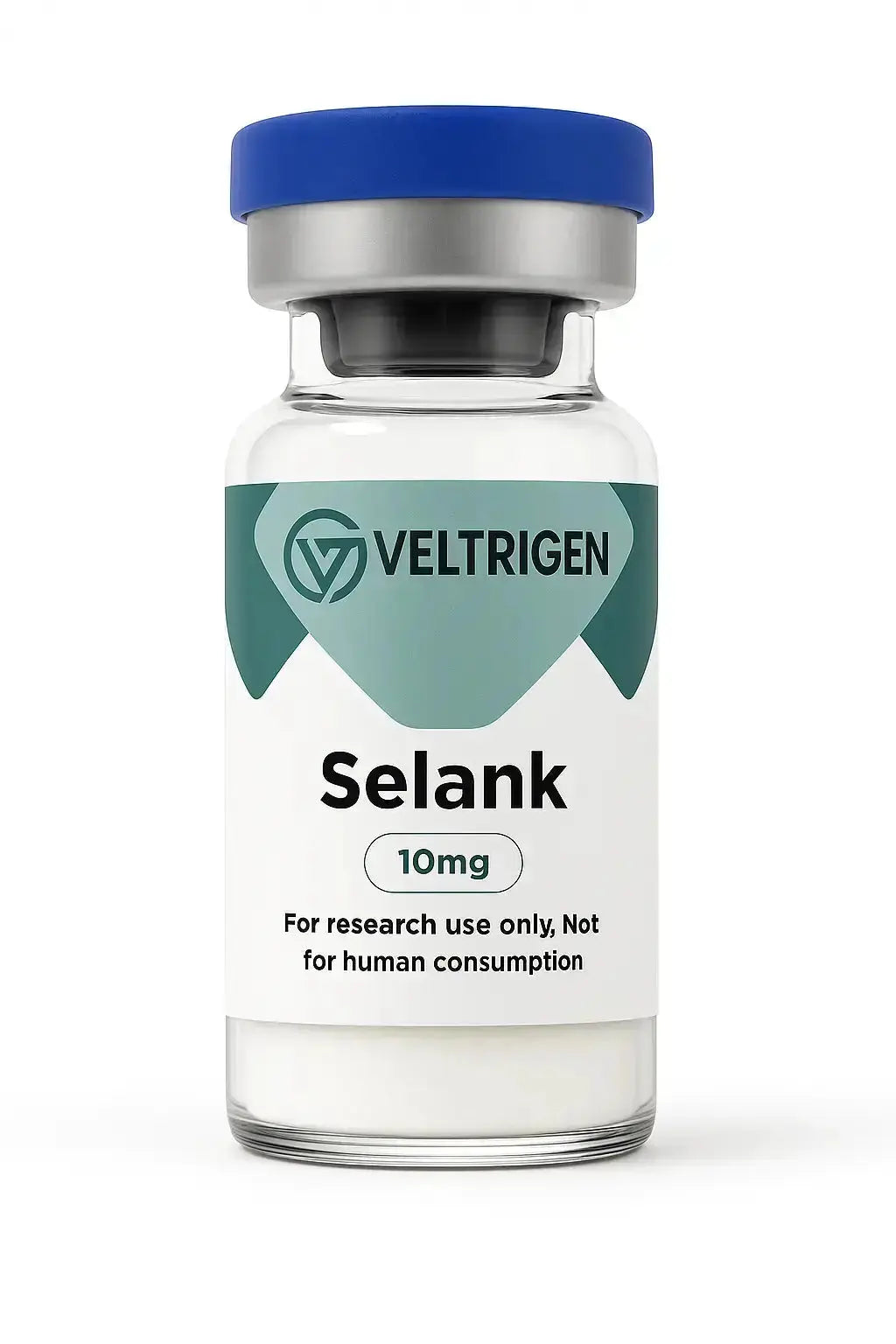
Selank Research Peptide: Mechanism & Scientific Overview
Share
Introduction
Selank is a synthetic research peptide derived from a fragment of the endogenous tetrapeptide tuftsin. Within experimental contexts, it has been studied for its potential to modulate neurochemical pathways involved in stress, cognition, and emotional balance.
As with many neuroactive peptides, Selank remains strictly a research compound, not approved for therapeutic or diagnostic use. Nevertheless, its distinctive structure and neurochemical properties make it a frequent subject in neurobiology and peptide pharmacology studies.
Background and Structure
Selank belongs to the class of synthetic neuropeptides developed to mimic and enhance natural immune and neural regulatory sequences.
Molecular Type: Heptapeptide analog of tuftsin
Research Classification: Nootropic / neuropeptide
Common Form: Lyophilized powder for laboratory reconstitution
This modification improves peptide stability and receptor selectivity, allowing researchers to study longer-acting effects on neurotransmitter systems and stress response mechanisms.
Mechanism of Interest in Research
Research models suggest that Selank may influence several biochemical pathways:
GABAergic modulation: Preclinical studies indicate possible effects on GABA receptors, associated with relaxation and reduced stress response.
Monoamine balance: Observations in animal models point to regulation of dopamine and serotonin metabolism.
Cognitive and stress interplay: Selank is explored for how neurochemical modulation may affect learning, memory, and adaptive behavior in test subjects.
Such findings position Selank within the growing field of neuroregulatory peptide research.
Selank in Cognitive and Behavioral Studies
Scientific literature describes Selank being evaluated in both animal and limited clinical research models for its impact on neurobehavioral performance:
Cognitive models: Investigated for effects on attention, learning, and information retention.
Stress and fatigue models: Studied for its potential to stabilize behavioral and physiological responses under stress conditions.
Results remain preliminary and experimental, highlighting Selank’s ongoing value as a subject of laboratory investigation rather than as a therapeutic compound.
Laboratory Applications
Selank continues to be examined in controlled environments such as:
Neuroscience research – peptide-receptor interaction and neurotransmission analysis.
Pharmacology studies – testing of neuropeptide analog stability and receptor affinity.
Biochemistry labs – enzymatic degradation and peptide characterization research.
Researchers use it to better understand the link between peptide signaling and neurochemical regulation.
Handling and Storage
For laboratory consistency and reproducibility:
Store lyophilized peptide at −20 °C in a dry, dark environment.
Reconstitute using sterile solvent under aseptic conditions.
Avoid repeated freeze-thaw cycles post-reconstitution.
Why Selank Draws Scientific Interest
Selank’s hybrid nature—blending immune-derived and neuroactive properties—has made it an intriguing focus of research. Its exploration contributes to understanding how short synthetic peptides can influence neurological and behavioral pathways without crossing into pharmacological claims.
Conclusion
Selank represents an emerging class of neuropeptide research compounds studied for their role in stress modulation and cognitive regulation models. Its unique structure and preclinical profile make it valuable for researchers investigating peptide signaling and neuroregulation.
⚠️ Disclaimer:
All information presented is for educational and research discussion only. Selank is not approved for human or veterinary use. All Veltrigen products are provided for laboratory research purposes only.